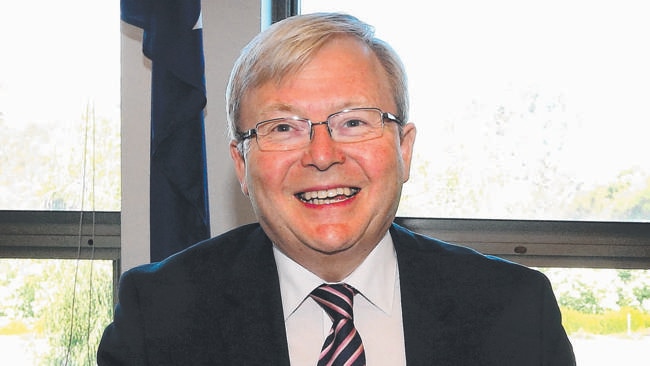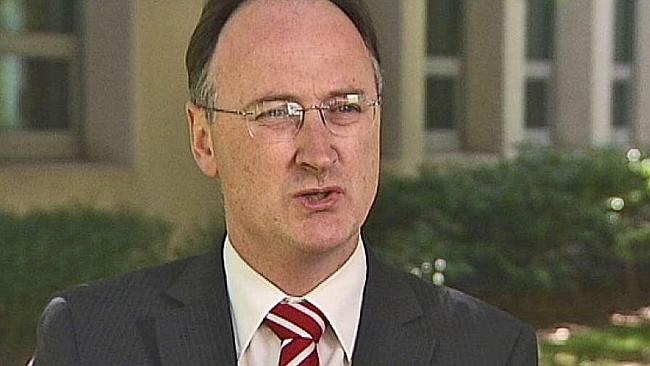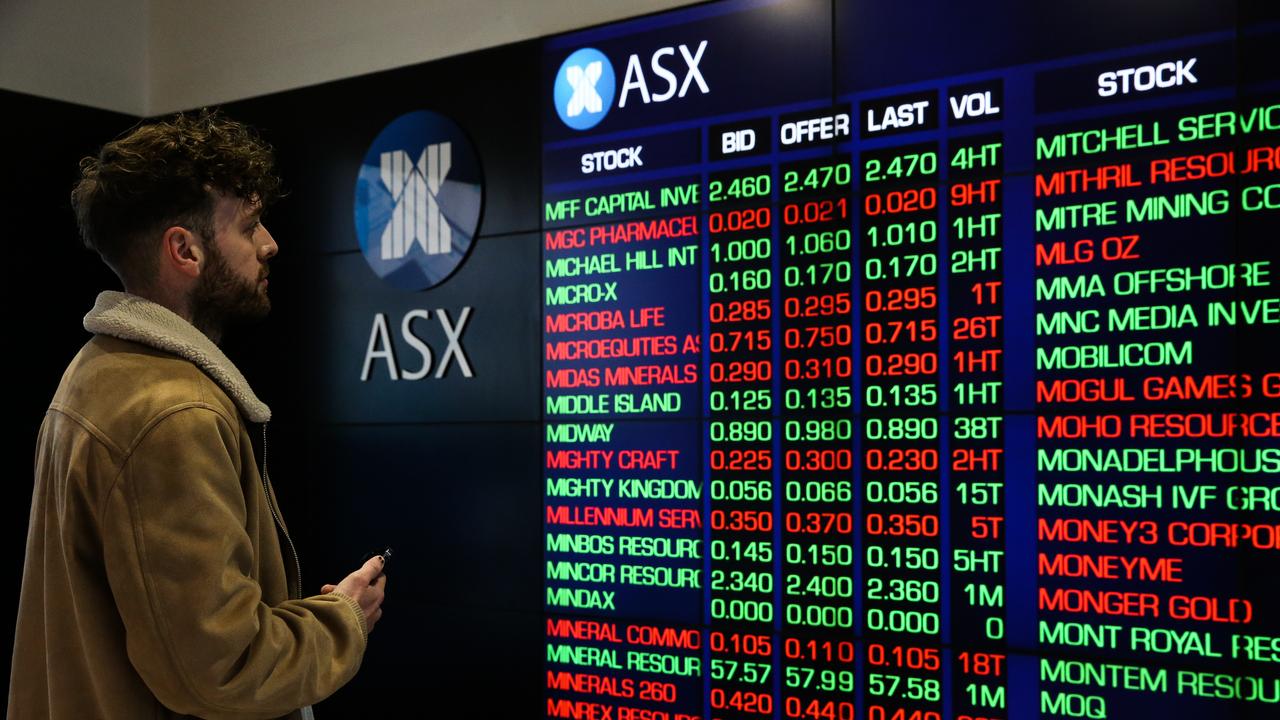Imported used cars a threat to Australian market
A PLAN to flood Australia with imported used cars could wipe millions off the value of the most popular cars on the roads and slam the brakes on new-car sales.

A PROPOSAL to flood Australia with imported used cars could be worse than the former Labor government’s plan to change the Fringe Benefits Tax rules on company vehicles — and dent the value of almost every privately-owned car in Australia.
The car industry has warned that the changes would wipe “hundreds of millions” of dollars from the value of the most popular vehicles already on the road, slam the brakes on up to 300,000 new-car sales each year, and risk increasing the road toll after hitting an 89-year low.
The industry has hit the panic button after the Productivity Commission proposed to relax the rules governing “grey imports”, the name given to imported used cars that were never sold as new in Australia.
“Grey imports” have typically been sold in very small numbers and restricted to specialty vehicles favoured by enthusiasts who understand the limitations of what they’re buying.
But given that there will soon be no Australian car manufacturing industry to protect, the Productivity Commission wants to relax the restrictions on “grey imports” and broaden the criteria to include regular vehicles in the belief it will make used cars more affordable.
“The impact of relaxing the rules on “grey imports” would be far greater than the impact of last year’s proposed changes to Fringe Benefits Tax,” said the Federal Chamber of Automotive Industries chief executive, Tony Weber.
The industry estimates the Rudd Government’s proposed changes to FBT rules on the personal use of company cars cost 30,000 new-car sales last year, but the changes to the rules regarding imported used cars could wipe up to 300,000 new-car sales — equivalent to one-third of the market, as it did when New Zealand removed similar restrictions in the 1990s.

Used car prices in Australia are already at record lows because new-car affordability has driven down the value of second-hand vehicles.
In bitter twist, the move would also dent the value of almost every privately-owned car that’s less than 10 years old because the market would be flooded by cheaper alternatives, according to industry estimates.
It means even those who don’t buy a “grey import” would end up paying a price, because they would get less for their car at trade-in time.
The salary packaging and fleet leasing industry has written to the Productivity Commission warning that a high volume of imported used cars would damage the resale value of the almost 360,000 company vehicles on Australia’s roads, a combined total it estimates would be in the “hundreds of millions” of dollars.
This would leave the Tax Office with a hefty bill given that businesses can lodge a claim to offset some of the financial loss on company vehicles.
There are also serious safety concerns; if the number of used cars increases and new-car sales decline it could have an adverse impact on the road toll.
The average age of cars on New Zealand has risen since it derestricted the rules on “grey imports”.
But the average age of cars in Australia has fallen, which has been viewed by safety experts as a major contributor to the lowest road toll in 89 years in 2013 — despite a record number of registered vehicles.
The latest figures show four out of five new cars sold in Australia have a five-star crash safety rating. A decade ago less than a third of new cars received top marks.

The peak body representing the car industry says it is “extremely concerned with suggestions to allow the large-scale importation of second-hand passenger motor vehicles into Australia”.
“Those who make these suggestions, like the Productivity Commission, don’t seem to recognise that many second-hand imported vehicles will replace a new vehicle sale with direct and negative impacts on safety and environmental standards,” Mr Weber said.
Relaxing “grey import” rules would also increase the risk of buyers unwittingly purchasing a badly damaged vehicle that’s been repaired, a loophole that was closed in Australia two years ago.
“Consumers won’t know the history of the car they are purchasing,” said Mr Weber.
“This would undo all of the work undertaken by the Federal Government and State Governments to effectively manage written-off cars and protect consumers through initiatives such as the Personal Property Securities Register.”
An investigation by The Daily Telegraph last year found the winding back of odometers is rife in the “grey import” used-car trade because it is next to impossible to prove the authenticity of the certificates supplied with the vehicles, and Australian consumers cannot access accurate data without expert help.
Even the Productivity Commission cited a study that estimates up to 70 per cent of “grey imports” have had their odometers tampered.
Unscrupulous sellers would be more easily able to disguise a car’s history under the proposed changes, because it’s almost impossible to trace.
Mr Weber cited reports that Russia is receiving second-hand cars and car parts from Japan that have radioactive fallout from the 2011 Fukushima nuclear power plant meltdown.
“There is also the potential for criminal elements to use second-hand imports for rebirthing stolen cars,” said Mr Weber.

Controversially, the Australian Automobile Association, which has previously campaigned for safer and newer cars for better road safety — and improved vehicle history checks to wipe out unsafe crash repairs and stolen-and-re-birthed vehicles — is not opposed to the changes to the rules on “grey imports”.
“I see no reason why if you can meet the safety standards, and someone can make the business case to import the vehicles, why anyone would object,” said Andrew McKellar, the chief executive of the AAA, the peak body of the NRMA, RACV, RACQ, RAA, RAC and RACT, which represents 7 million members.
“The cars would need to undergo the same testing and certification procedures that any new vehicle is required to undergo in Australia.
“It can’t be a fly-by-night operation,” said Mr McKellar.
“This is not situation where someone can bring in a few vehicles and make a few quick dollars because they’ve found a few cheap cars overseas.”
The “grey imports” already sold in Australia often cost more to run than regular used cars because most body parts and many mechanical components need to be specially imported, which in turn drives up their insurance premiums.
But Mr McKellar said “anyone bringing in used cars in volume would be expected to be able to supply the parts for an appropriate period”.
“If (the changes) result in offering consumers a little bit of extra choice and a bit better affordability, then there is no reason why it shouldn’t be taken up,” said Mr McKellar.
However, if the changes go ahead it could end up being an own goal for the Federal Government trying to fill a massive budget black hole.
Although more than 90 per cent of the “grey imports” that arrive in Australia come from Japan, the rule changes would also make it more appealing to import prestige cars from the UK well under the Luxury Car Tax threshold.
Audi, BMW and Mercedes-Benz and other prestige brands, which have enjoyed record new-car sales in Australia over the past decade, have contributed a sizeable portion of the $450 million in annual Luxury Car Tax revenue.
Popular “grey imports”
Nissan S-Cargo (van)
Nissan Figaro (convertible)
Nissan Cube (small hatch)
Toyota Alphard (people mover)
Mazda Bongo (people mover)
Mitsubishi Delica (people mover)
Nissan Elgrand (people mover)
Nissan Skyline (sports-car)
What the Productivity Commission wants to bring in
Near new Toyotas, Mazdas, Hondas, Nissans (and others) from Japan, and Jaguars, BMWs, Mercedes-Benzes, Audis, Porsches and Ferraris (and others) from the UK.
Why is the car industry upset?
Because it doesn’t stock parts in Australia for cars originally sold overseas (and that were never sold in Australia). It’s concerned that customers may buy a vehicle unaware it’s a “grey import” and demand parts and service back-up and become disgruntled with the brand through no fault of its own.
But won’t prices go down if we let more cars in?
Not necessarily. Six years of record sales in Australia have driven down the prices of new cars which, in turn, has already pushed down the value of used cars.
Aren’t most cars the same underneath anyway?
Not necessarily. Many cars sold overseas lack the safety features that are mandated in Australia. Because parts are hard to source (some mechanical components are common, but most body panels are unique) insurance premiums on grey imports can be higher than average.
So why is the government considering this?
It’s scared that the car companies might raise prices once there is no local car manufacturing industry to protect. But that’s highly unlikely. Australia is the most competitive new-car market in the developed world, with more than 65 brands (more than the US and Europe) creating unprecedented pricing pressure.
Should I buy a “grey import” today?
Only if you’re after a specialist type of car and you’re prepared to live with its limitations (such as parts and service and higher insurance premiums), and not knowing it’s true history (if it’s been crashed and then repaired, or how far it’s really travelled — despite what the odometer says).
This reporter is on Twitter: @JoshuaDowling



